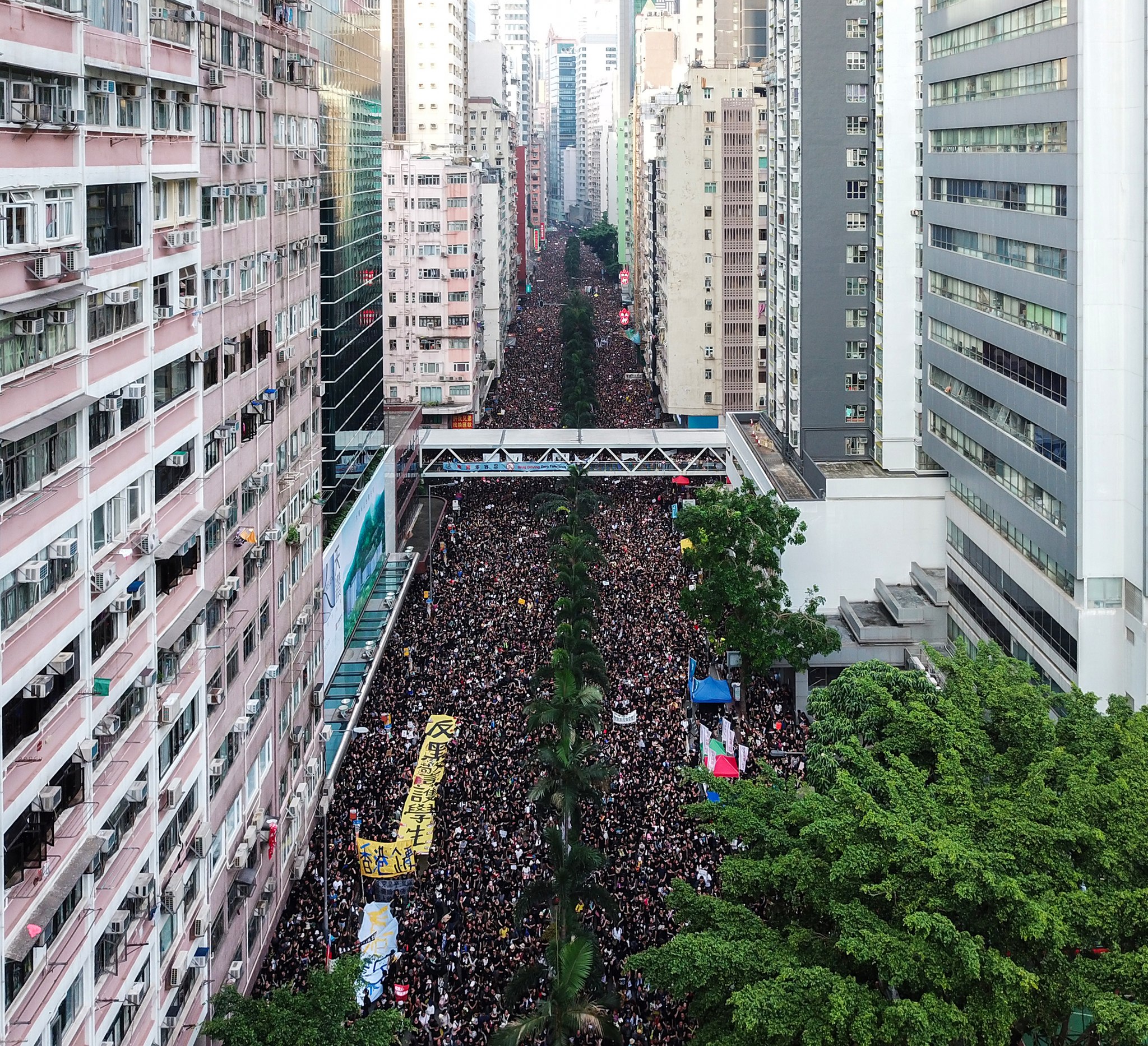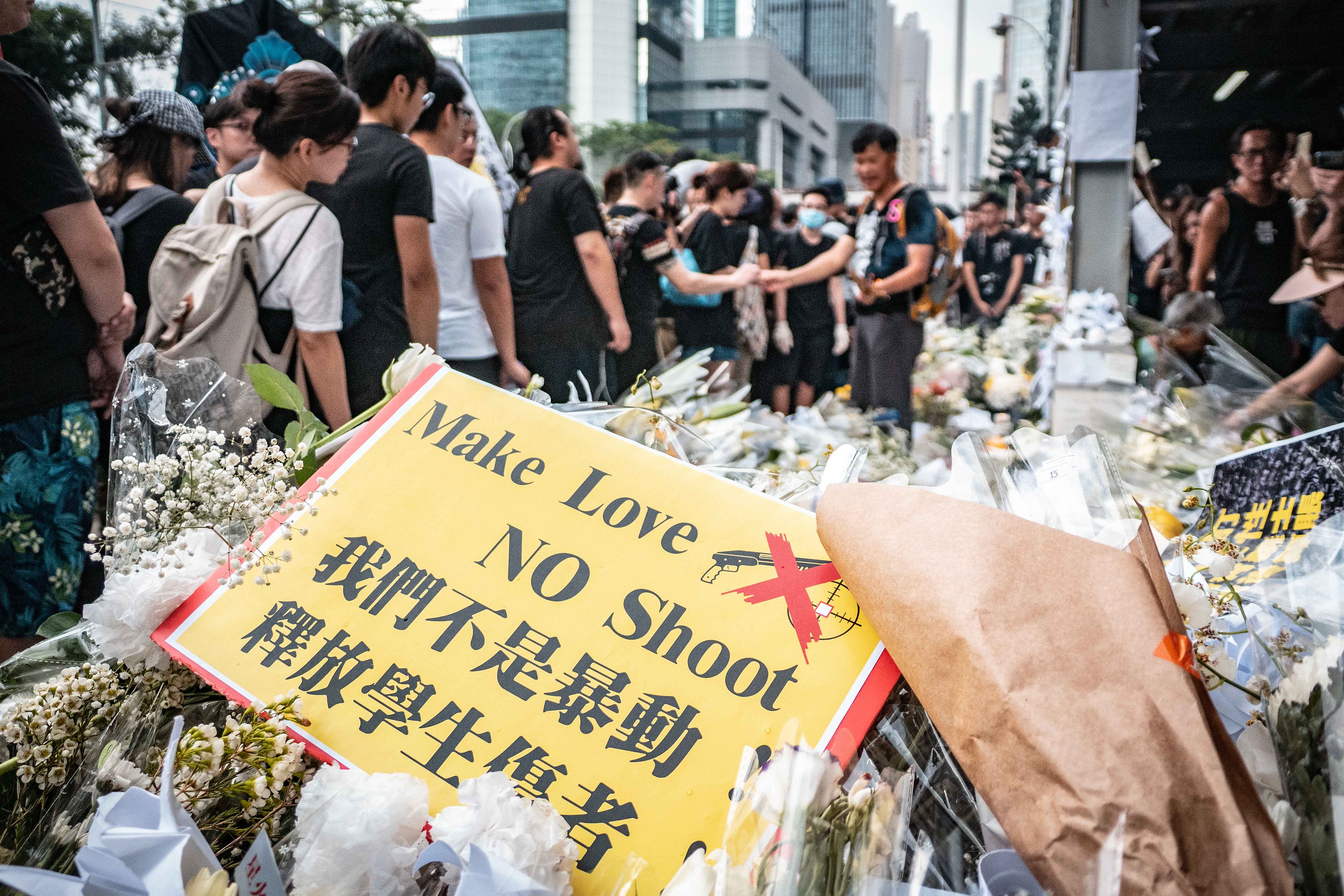
A recap of the anti-extradition bill protests
By Caroline Ho, Assistant Editor
As Hong Kong rolls into its third consecutive month of protests across the city, the implications and impacts of these demonstrations and the response against them for Hong Kong, China, immigrant communities overseas, and the rest of the world are becoming increasingly clear.
The initial spark for the demonstrations came out of a proposed bill put forth by the Hong Kong government that would allow authorities to extradite suspects to countries with which Hong Kong does not already have extradition treaties, most notably China. Many citizens and expatriates of the city worry that this bill would be an excuse for the Chinese government to arbitrarily detain and indefinitely imprison anyone they wish—a human rights violation China has been known to commit.
Though smaller marches and rallies against the bill have been taking place since March, the mass protests took off on June 9 when hundreds of thousands of Hong Kong’s residents marched through the streets. Organizers of the protest and many major news outlets estimate the number at over one million demonstrators, out of Hong Kong’s population of almost 7.5 million, although police claim there were 240,000 in the crowd at its peak, according to the BBC. The day’s peaceful rally was followed by violent clashes between hundreds of protestors, many wearing masks, and police armed with batons and pepper spray.
June 12 saw a general strike across many businesses and other sectors, including student strikes in many higher education institutions, and another large rally that culminated in violence by police against protestors. Thousands of riot police fired tear gas and rubber bullets into the crowd, which injured dozens of people—later characterized as a “riot” by Commissioner of Police Stephen Lo and Chief Executive Carrie Lam. In response to the activity, Hong Kong’s government temporarily suspended the bill on June 15 but did not withdraw it, which did little to quell the tension. The following day a reported two million protestors attended a planned march, a record number for Hong Kong.
Since June, large-scale rallies and strikes across multiple sectors—among lawyers, civil servants, medical professionals, and other groups—have been ongoing, with mass protests flaring up every weekend and police violence against protestors continuing to escalate. Though the extradition bill remains a crucial part of the protests, the movement has grown to encompass a broader push for greater democracy and accountability in the face of increasing police brutality. Activities have spread from around the Legislative Council building, where the first protests took place, to areas across many parts of Hong Kong Island, Kowloon, and the New Territories, disrupting businesses, transit, flights in and out of Hong Kong, and almost every aspect of life in the city. Last Monday, August 5, a general strike caused about 250 flights to be cancelled and virtually halted transportation within the city.
As of August 6, police have used 1,800 rounds of tear gas and arrested 568 people as young as 13, reported the BBC. Hundreds have been injured among both protestors and police, and five individuals have reportedly died by jumping to their deaths in protest of the government’s actions.
This is certainly not the first time that tensions have erupted over China’s influence and authority in Hong Kong. Since the city’s return to Chinese administration in 1997 after over 150 years of British rule, Hong Kong has been run as a special administrative region (SAR) with its own government, economy, freedoms, and legal system. However, despite China’s promises to maintain a high level of autonomy for Hong Kong and its constitution’s stated aims to elect its leaders democratically, the SAR’s chief executive is currently chosen by a 1,200-member, largely pro-China committee. Elections for Hong Kong’s lawmaking Legislative Council are also heavily influenced by China, with two elected members being disqualified from office in 2016 for refusing to swear allegiance to the mainland.
The current protests have been compared to Hong Kong’s 2014 protests, which centred on the issue of electoral reform. Tens of thousands of demonstrators, many of them students, took to the streets to demand fuller and more transparent democracy. Those two and a half months of civil disobedience became known as the Umbrella Revolution, named for the umbrellas that protestors used to protect themselves from police pepper spray.
Unlike the Umbrella Revolution, which was largely organized by several student and pro-democracy groups, 2019’s protests are decentralized with no single group leading the charge. However, college and high school students and the younger generation still comprise a significant part of the protests as the demographic least likely to support and identify with the mainland. According to surveys by the University of Hong Kong this June, the majority of Hong Kong’s citizens identify as “Hongkongers” rather than “Chinese.” Younger survey respondents especially were “less likely [to] feel proud of becoming a national citizen of China” and “more negative […] toward the Central Government’s policies on Hong Kong,” said the university’s public opinion program.
“We are not China. Police should protect the citizens, not the government,” said 23-year-old protestor Marco Leung in an interview with CNN.

International responses to the demonstrations and the police brutality against them have been largely supportive of the pro-democracy side. Amnesty International issued a statement on July 31 decrying the recent charges laid against protestors for ill-defined “rioting”: “With these ambiguous charges combined with the repeated use of excessive force by police and the outright banning of some protests, the authorities are showing a flagrant disregard to the right to peaceful assembly.”
The protests have also spilled over to many cities and university campuses outside of Hong Kong, particularly those with large immigrant communities who have strong ties to Hong Kong and China, including Vancouver. Rallies by Hong Kong immigrants and their families and allies have been held across many major Canadian cities in support of the pro-democracy movement. At SFU, recent tensions have manifested around the “Lennon Walls,” where students could post sticky notes of support or inspiration for Hong Kong, after the wall was torn down and re-erected multiple times.
The conflict over the wall points to the global scale of the divide between those who support Hong Kong’s protestors and those who support China.
“What’s happening in Hong Kong is of a great deal of interest to students who are migrants and among students, in general,” said UBC Asian Studies professor Leo Shin to the Vancouver Sun.
“There is a large population on Canadian campuses and here at UBC and SFU of students with ties to the Chinese-speaking world […] The conflict or clashes in Hong Kong will spill and touch us.”